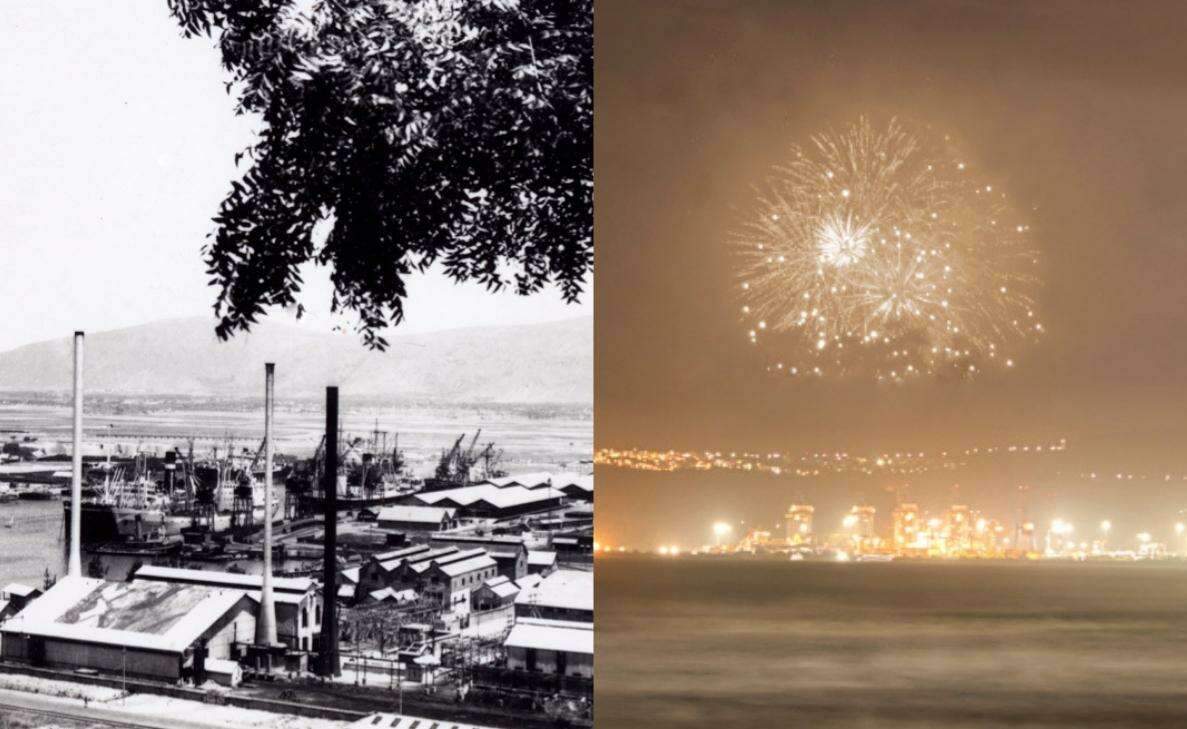

Imagine Vizag being a colonial town with the only light source being dim oil lamps. These were the scenes in the City of Destiny over 100 years ago when coal was the means of cooking and men were employed to fill oil in street lamps. From the old times, Vizagapatam, through years of development, metamorphosed into the Vizag we see today. On the occasion of Diwali, John Castellas, a Vizag heritage enthusiast and aficionado, shares how the city’s picture has changed over the years.
Read on for the full story.
Also read: Sweet shops in Vizag that are the best places to begin your Diwali festivities
In a few days, it will be Deepavali (Diwali), and your homes and the streets will be lit with the festive brightness of diyas. But there was a time in Vizag, just 100 years ago, when such oil-wick lamps were the only means of night light. There was an abundance of vegetable oil for earthenware lamps and wax for the making of candles. Before electricity, hot coal (charcoal) sigris were the means of cooking, and even the dhobi used hot coal for his ironing. As kerosene became more freely available, the use of kerosene fuelled Hurricane Lamps and Cookers became more widespread.
Cooling was by overhead punkahs in the more affluent homes and some public places like the Collector’s Office or St Paul’s Church in Waltair.
Before electric lights, a Municipal Lamplighter checked oil levels, trimmed the wicks and lit Vizag’s streetlights every evening. Each morning, the Lamplighter would do his rounds extinguishing every streetlight. The first demonstration of electric lighting in Vizag was for the opening of the new St Aloysius School buildings in 1908. Brother Emile from the St Aloysius Industrial School lit up the reception hall generating electricity from an early generator from France to power the few machine tools that he had brought with him. At this time, the first movies were shown at the Lighthouse Talkies near the maidan and St John’s Church. Portable generators powered the cinema projectors.
In 1933, the Vizagapatam Electric Supply Corporation was registered in Madras with a share register of Rs 3,00,000, each worth Rs 100. It took a licence to supply the town power from the new powerhouse. Local captains of industry and commerce were appointed to the corporation’s board. M. R. Ry. CVS Narasimharaju Garu was appointed Chairman. He is reputed to have established the first Sugar Mill cooperative. K Ramabrahamam was a Director whose shipping business has grown and flourished; other directors were the Freedom Fighter Tenneti Viswanatham M.A, B.L, Mootha Sarvarayudu, who established the Vizag Book Centre, Vyricheria N Gajapathiraju the Zamindar of Kurupam, lawyer GC Tajraj, and the eminent engineer Datla L Narshimharaju B.A, B.Sc (Eng).
The town of Vizag was first electrified in 1933 when the harbour was opened. The main users were the Harbour Project- 4,00,000 units, Bengal Nagpur Railway- 2,50,000 units for Vizag and Waltair Stations and colonies, and King George Hospital and Andhra University were the next big customers.
The municipality demand was mainly for the night and residential lighting. Twenty-three miles of overhead and underground main cables were laid in 1935, and 5 transformer stations were operating. By the end of May 1935, 400 homes were connected with 471 municipal lights. Among the first buildings to be electrified were the St Aloysius Industrial School, Port Quarters, Collectors Office, King George Hospital, Andhra University, and Waltair Station, including the Railway Quarters and the Waltair Club.
So when you light the Diwali lamps at home this week, remember how electric light, power, and the glow of progress came to Vizag about 100 years ago. Happy Diwali!
Should you have an anecdote or history on Vizag, the author would appreciate you contacting him at jcastell@ozemail.com.au.
Written by John Castellas, whose family belonged to Vizag for five generations. Educated at St Aloysius, migrated to Melbourne, Australia in 1966, former General Manager of Engineering at Boeing & Qantas Airways, in retirement Lecturers in Aviation Management at Swinburne University and is a Vizag aficionado.
Team Yo! Vizag wishes you all a happy and safe Diwali.
Courtroom drama or legal drama media is popular among people of all ages. This genre…
After successfully hosting two IPL 2025 matches for Delhi Capitals as their temporary home ground,…
The leaders of the Communist Party of India (CPI) staged a protest at Seethamadhara, Maharanipeta,…
To manage the surge in wait-listed passengers, the Railway Board has temporarily augmented several trains…
When one hears the phrase "toy trains of India," it's usually the famed mountain railways…
Daba Gardens, one of Vizag's oldest commercial hubs, is well known for its smartphone market.…
Leave a Comment